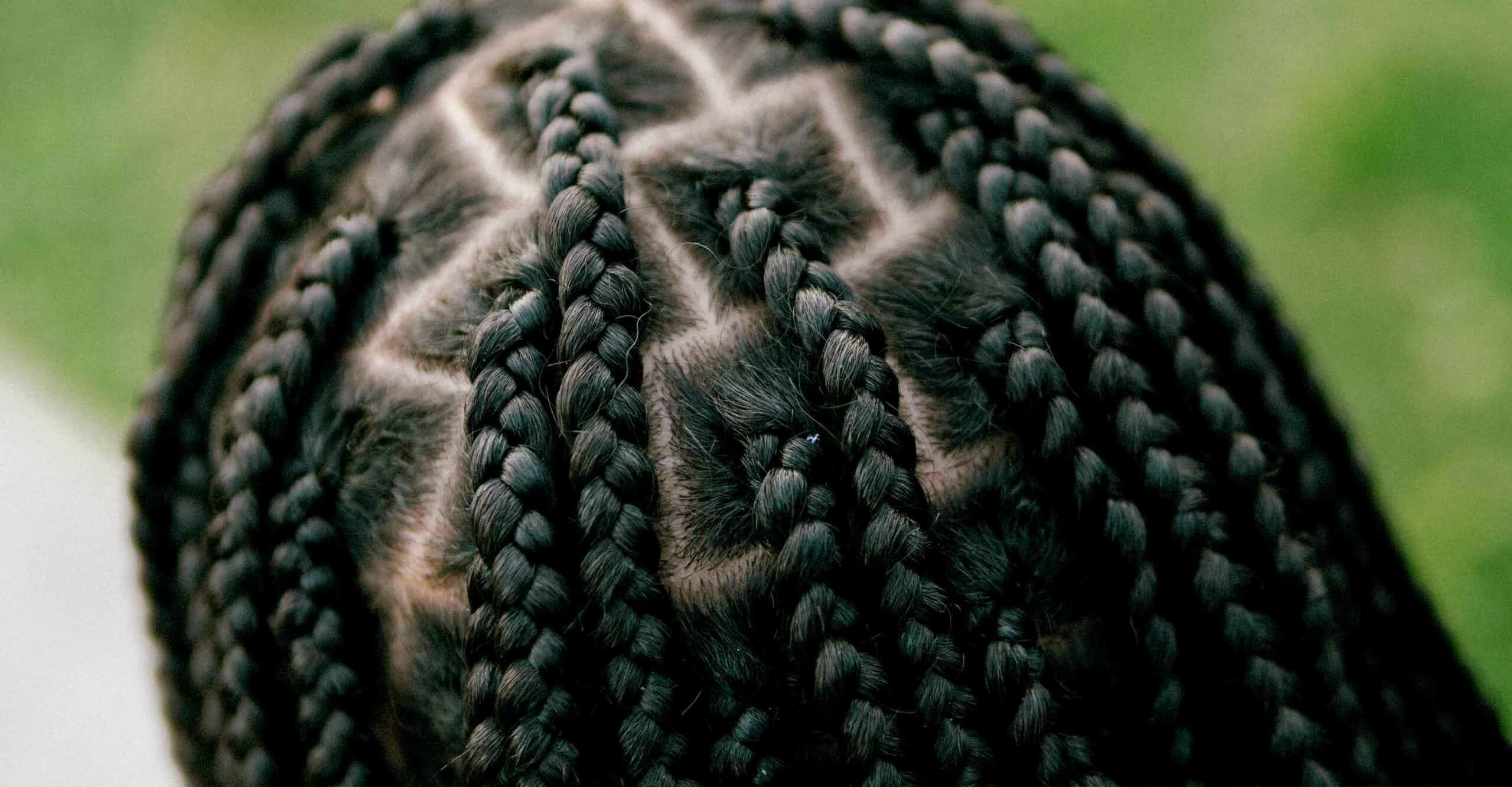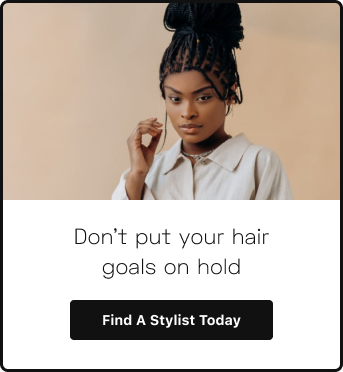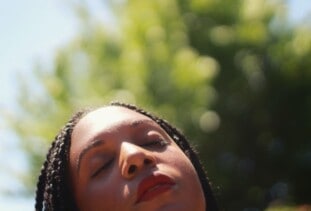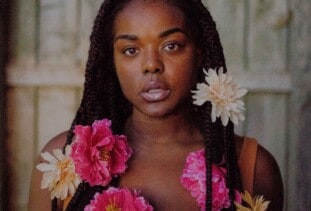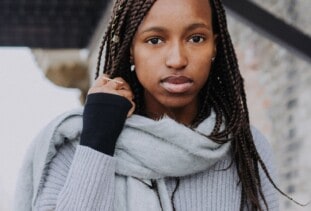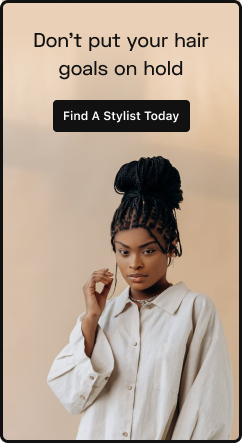Braids are a great go-to for so many of us who want a long-lasting look that’s easily customizable. They’re a staple protective style that’s seen many iterations and trends over the years.
If you’ve worn any braided style, then you know all too well the pain that sometimes comes during installation and the days after. We’ve created so many methods for loosening tight braids at home as a result. Luckily, times have changed and we’ve developed new techniques to lessen that pain and the need for DIY fixes.
Knotless braids are a new method that will help you say “bye bye” to painful braid installation. This technique lessens tension on the scalp and lets your braids naturally lay flat on your head. We’ll go over the other benefits, costs, and some styling inspiration for knotless braids in this guide.
What are knotless braids?
Knotless braids are a protective braided hairstyle done with a different technique than box braids. The hairstylist starts by braiding your natural hair at the root and then adding in extensions.
Knotless braids don’t start at the roots. Instead, with this braiding technique, the stylist adds hair extensions throughout the braiding process, which makes knotless braids more flexible.
You can also do more than knotless box braids. So if you’ve been asking yourself what knotless crochet braids are or if they’re even an option, they absolutely are! The main difference between the two braiding techniques is that regular crochet is looped through the cornrow twice, while knotless crochet is only looped through once.
Knotless braids vs. box braids: What’s the difference?
Knotless braids are similar to box braids, but the main differences are the installation process and how it affects your hair. StyleSeat Pro Erinn Courtney says she wishes more people knew that knotless braids are healthier to wear as opposed to braids with knots.
“Knotted braids wrap around an entire section of hair and can pull on the roots with the weight of the braid when growing out,” she said. “Knotless braids are braided into the hair so that the weight is distributed evenly and the root can maintain the weight while growing.”
Erinn Courtney
Benefits of knotless braids
So now you know what knotless braids are, but why are they better than styles like traditional box braids? Knotless braids have many benefits, such as:
- Less breakage and tension at the scalp since extensions don’t start at the roots. This means more protection for your natural hair.
- No waiting period between braiding and styling thanks to the installation process. This method makes your braids more flexible, which allows you to style them right away without waiting for them to loosen up.
- Pain-free installation compared to traditional styles. Since there’s no knot at the root, knotless braids don’t tug on the scalp.
- Style versatility. You can play around with the color or length, add accessories, and style the tips differently.
- Natural appearance since the braids lie flat against the scalp and don’t require much upkeep.
- Less contact between braiding hair and your scalp since the hair is fed into the braid. This is a great perk if you’ve experienced scalp irritation in the past from synthetic braiding hair.
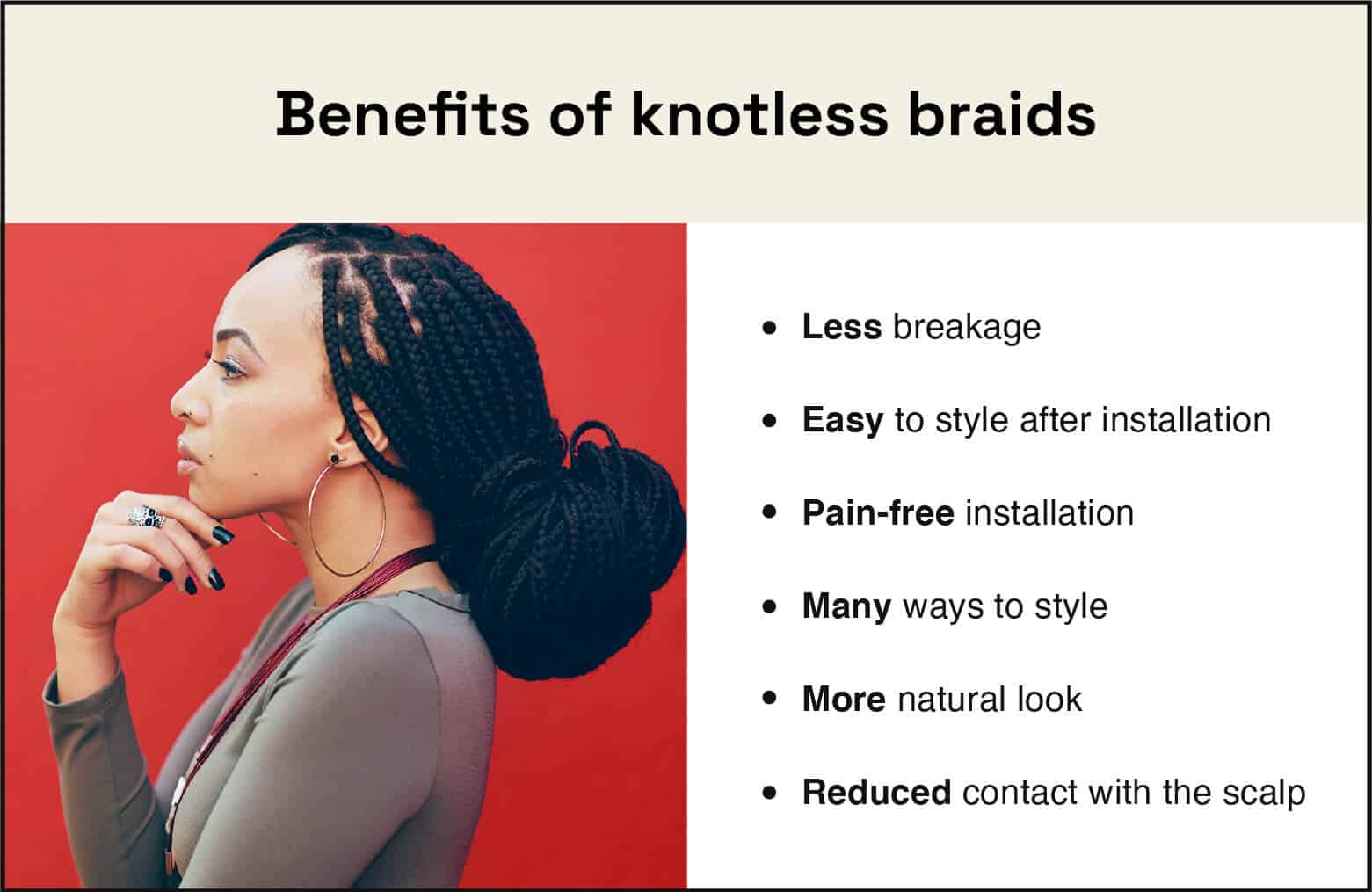
What do knotless braids cost?
Knotless braid installation can cost around $250 on average, not including the cost of hair.
However, this service can range from $150 to $600 depending on factors like:
- Technique
- Location
- Salon
- Braider’s expertise
- Style and color
- Type of braid you get
These are all common factors for most salon services. However, knotless braids have a few unique factors that also contribute to the price. For example, you’re also paying for your braider’s availability, since knotless braids are in high demand but aren’t offered at salons as commonly as box braids. Since knotless braids take longer to install than box braids, you’re also paying for your braider’s time.
What braid size should I get?
The braid size you get is up to you, what look you want, and how long you want your look to last. The smaller the braids, the longer they last.
Small braids are great for creating intricate styles and for allowing your natural hair to grow. They also give you easy access to cleanse and moisturize your scalp. On the other hand, small braids create more tension with your scalp and take up to 12 hours to install and up to 12 hours to take down.
Braiders may sometimes recommend medium knotless braids for those new to the experience. They don’t take as long and don’t need as much hair, so you can look fabulous faster.
Large and jumbo braids are for you if you don’t plan to keep them in longer than a month or so. Although you can’t create complex styles with this size, you can still add some flair with cuffs and beads. You can also ask your braider to try different parting patterns or to incorporate some color.
Regardless of the size, you should opt for light extensions whenever possible. Lighter extensions will make your braids feel less heavy and won’t pull on your scalp.
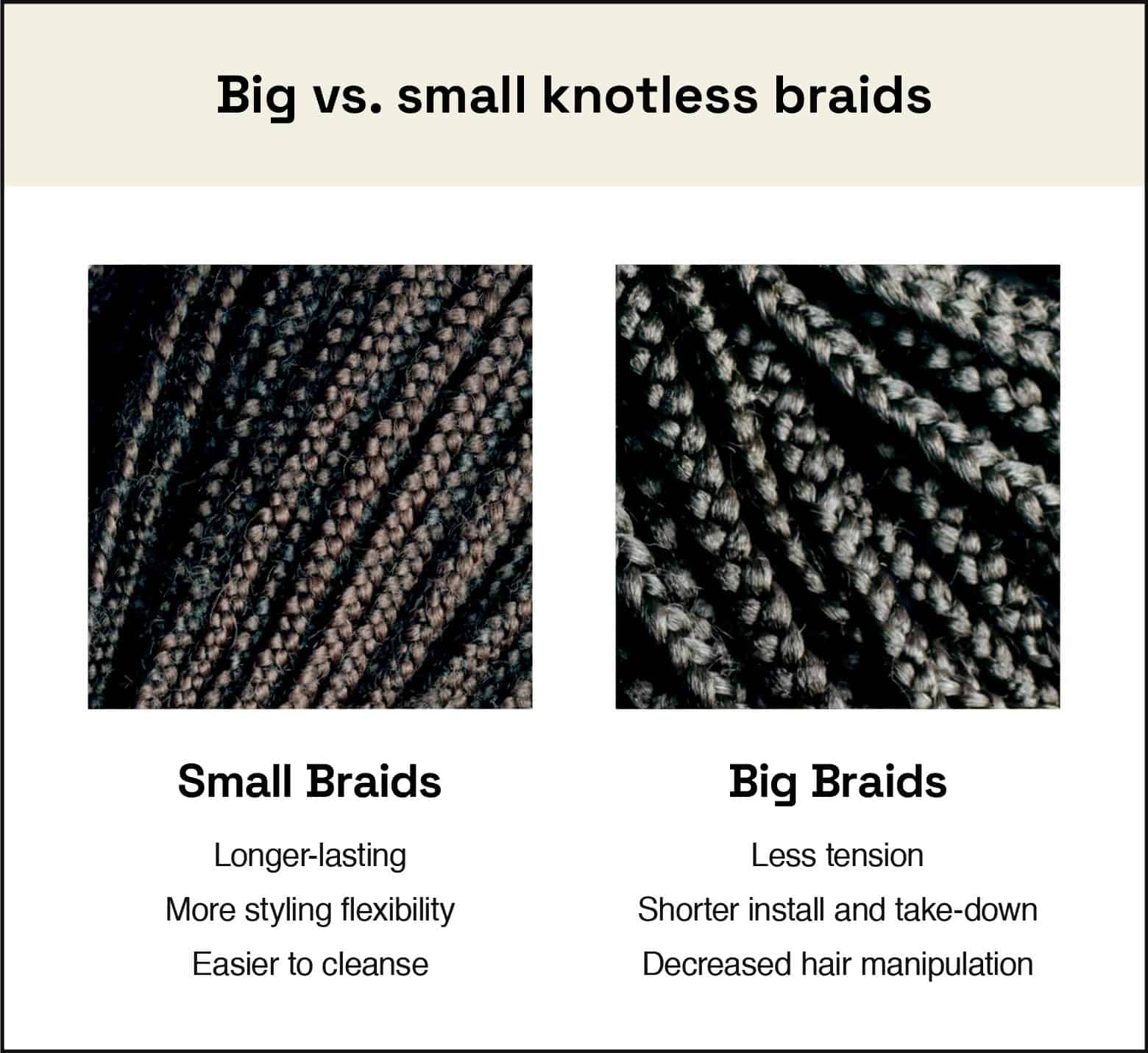
How long do knotless braids last?
Knotless braids last from six to eight weeks. You can maintain your braids with at-home maintenance and touch-up appointments. We’ll go over some care tips in the next section.
Your braids’ size and the type of hair you use also affects how long your braids will last. Human hair generally lasts longer than synthetic hair, but there are lots of pros and cons to consider between human and synthetic hair.
Although knotless braids feel more comfortable than other braids, you’ll need to take them out after a month or so to give your hair and scalp a break. It’s also important to cleanse and deep condition your hair once your braids are taken down.
How can I care for knotless braids?
You can care for knotless braids by keeping your hair clean and moisturized, allowing it to properly dry after using products, and protecting your hair while you sleep. Knotless braids need a little more care than traditional braids since it exposes more of your natural hair. These tips below are important both for maintaining your braids and for keeping your natural hair and scalp healthy.
- Cleanse your hair and scalp to prevent product buildup, itchiness, and irritation.
- Moisturize your braids, natural hair, and scalp to keep your hair nourished, healthy, and shiny.
- Allow your hair to dry after using products or washing to prevent mildew growth.
- Tie your hair at night to prevent tangling, knots, and breakage.
- Sleep on a satin pillowcase to lessen friction between your hair and the pillow. Silk is also great for retaining your hair’s moisture along with preventing tangling and breakage.
- Wear a satin scarf at night to give your hair extra protection by reducing friction between your hair and the pillowcase. Satin scarves have similar benefits to satin pillowcases.
- Book touch-up appointments so a Pro can professionally clean your scalp and touch up your edges. Your braider can also touch up and reinstall the braids just along your roots so you don’t have to get your braids fully redone.
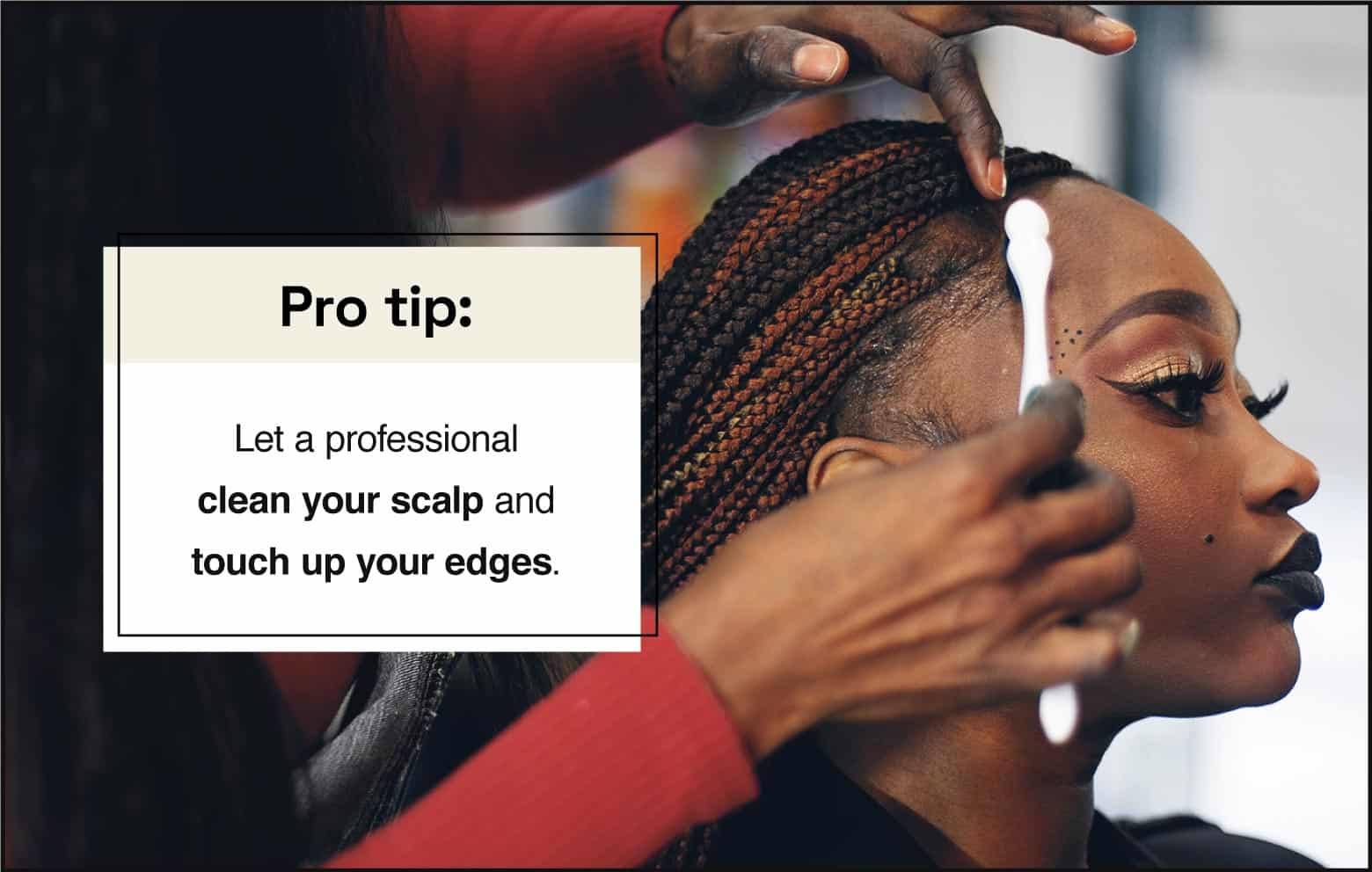
Can I do knotless braids at home?
You can do knotless braids at home if you’re confident that you’ve mastered the technique. We recommend seeing a Pro braider before your first attempt. It’s your opportunity to learn from them and to get tips on the best hair to use. However, going to a Pro can save you time, money, and potential damage to your hair.
Can knotless braids damage my hair?
Knotless braids can damage your hair if they’re not properly installed or given proper care. Compared to box braids, damage and breakage is less likely since the installation method uses less tension.
What are some ways I can style knotless braids?
You can style your knotless braids in a big bun, half up and half down, and many other ways you’d normally style box braids. From the color to the length to the many ways to accessorize, you can truly have the braids of your dreams. We rounded up some styling inspiration for you below.
Bun
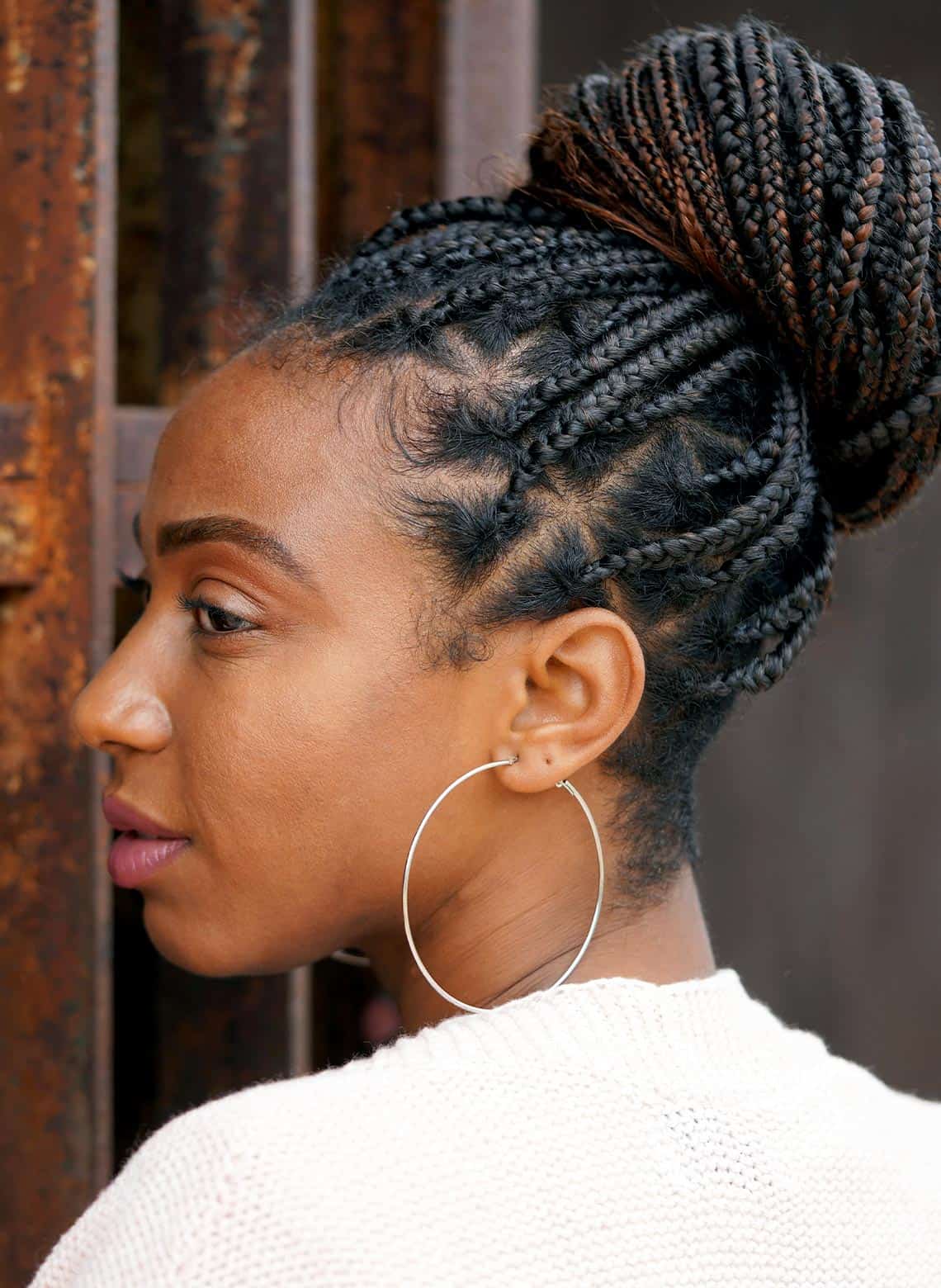
Since there’s a lot less tension with these kinds of braids, you’ll have an easy time wrapping your knotless braids into a big bun. It’s a great go-to style for both formal events and for running errands.
Jumbo
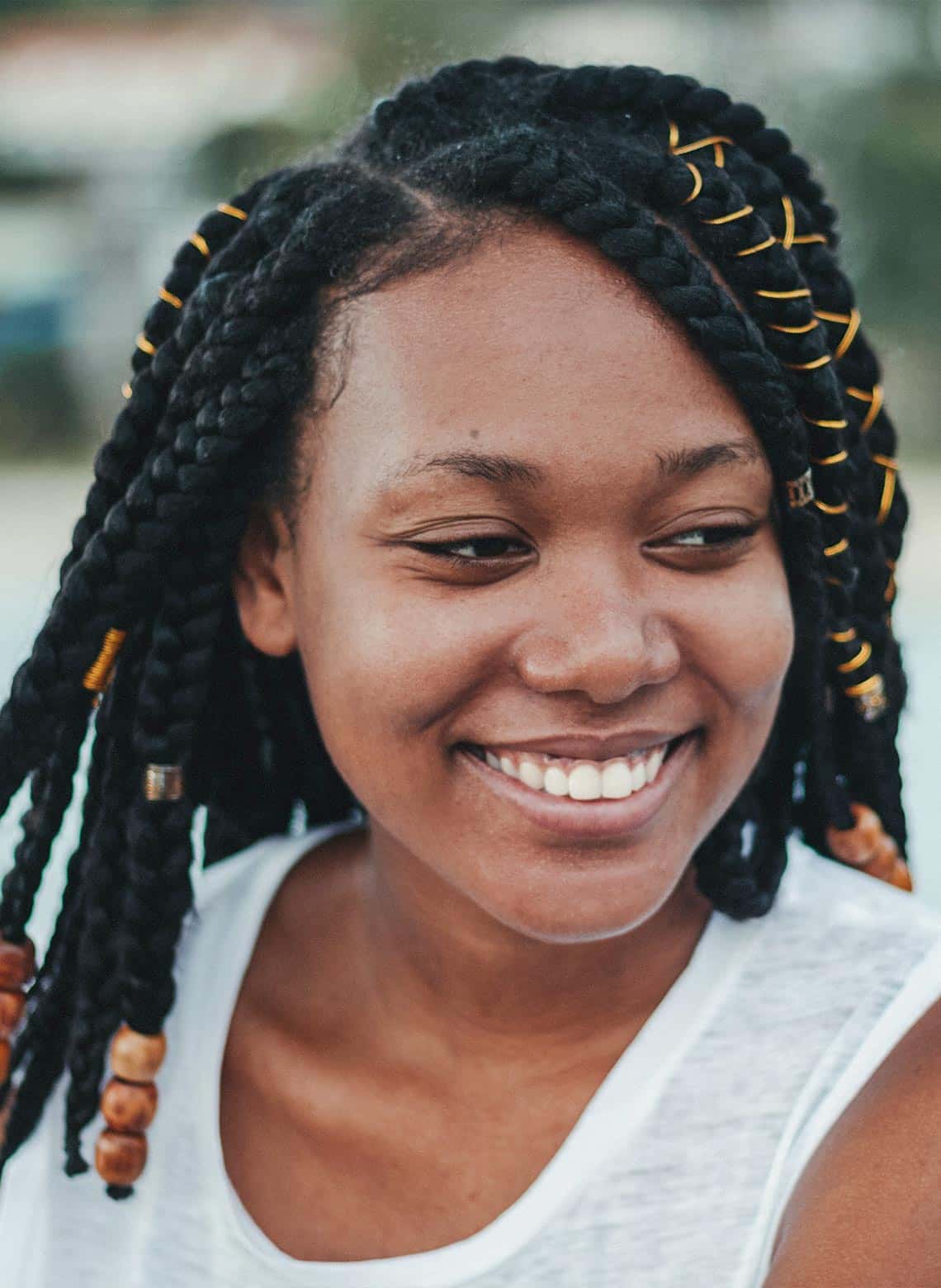
Jumbo knotless braids take less time to install and put less strain on your hair. Plus, the size makes any style look extra chic. Since you gather a lot more hair for the parts and braids, you’ll need to spend some extra time during the installation to make sure everything looks tidy.
High ponytail
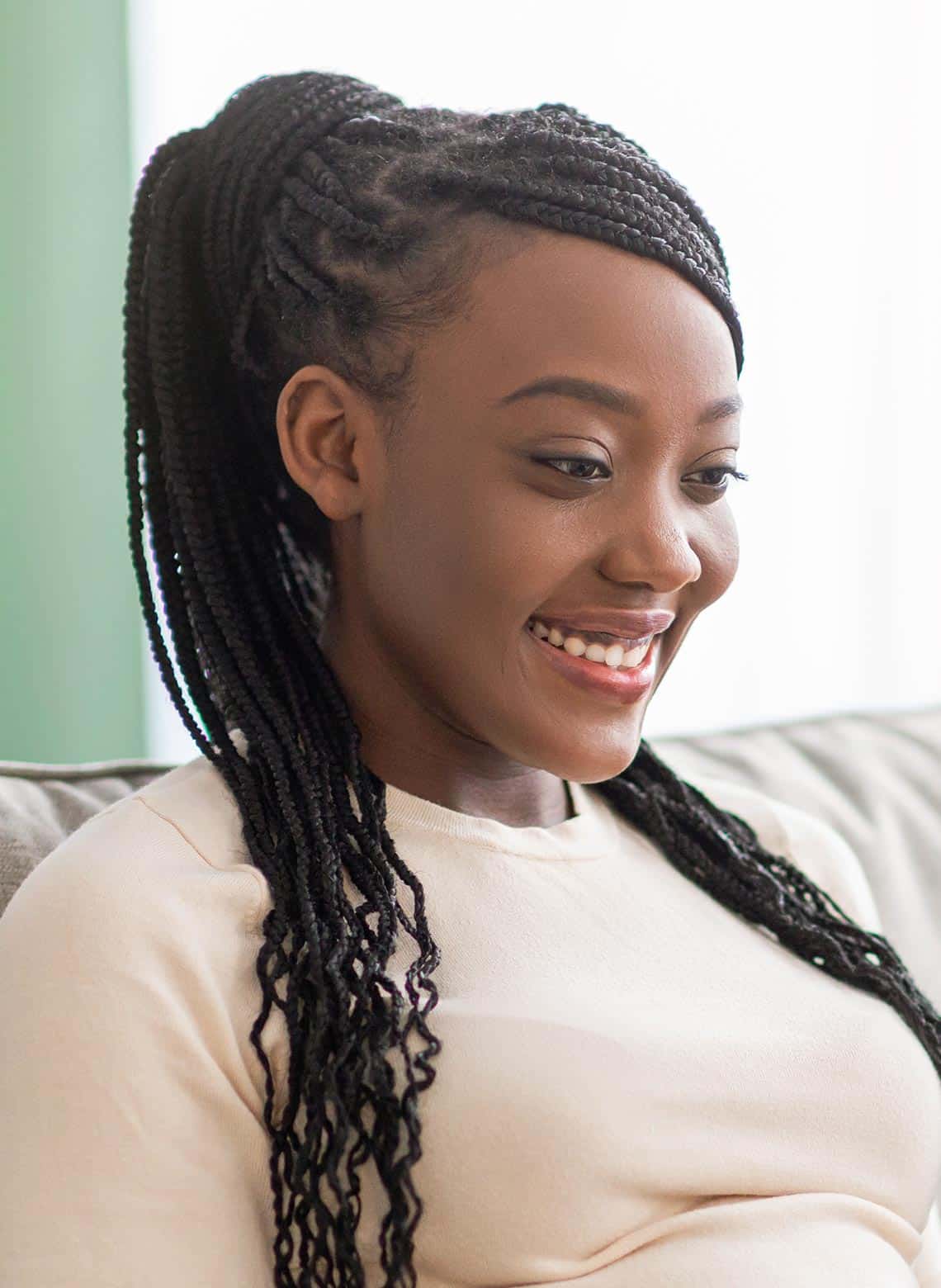
Proud of your length, but want to keep your hair out of your face? Tie your hair up into a high ponytail for a functional and fashionable style. A high pony is also a great option if you want to show off any intricate designs.
Color
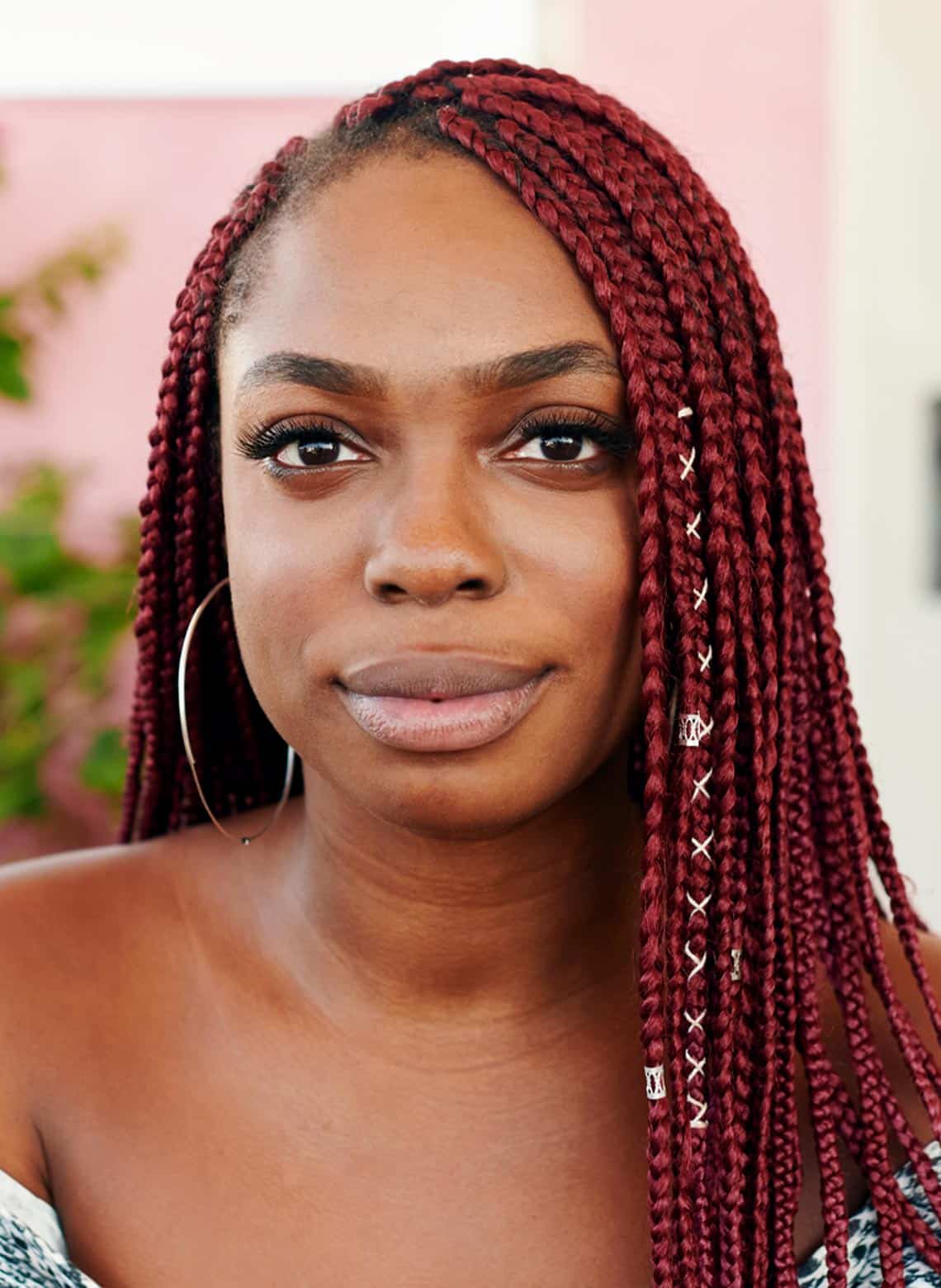
Mix up your look with some color. You can mix in your natural hair color by getting ombré braids. If you want something a little more unique, go with bold colors like red or purple.
Double bun
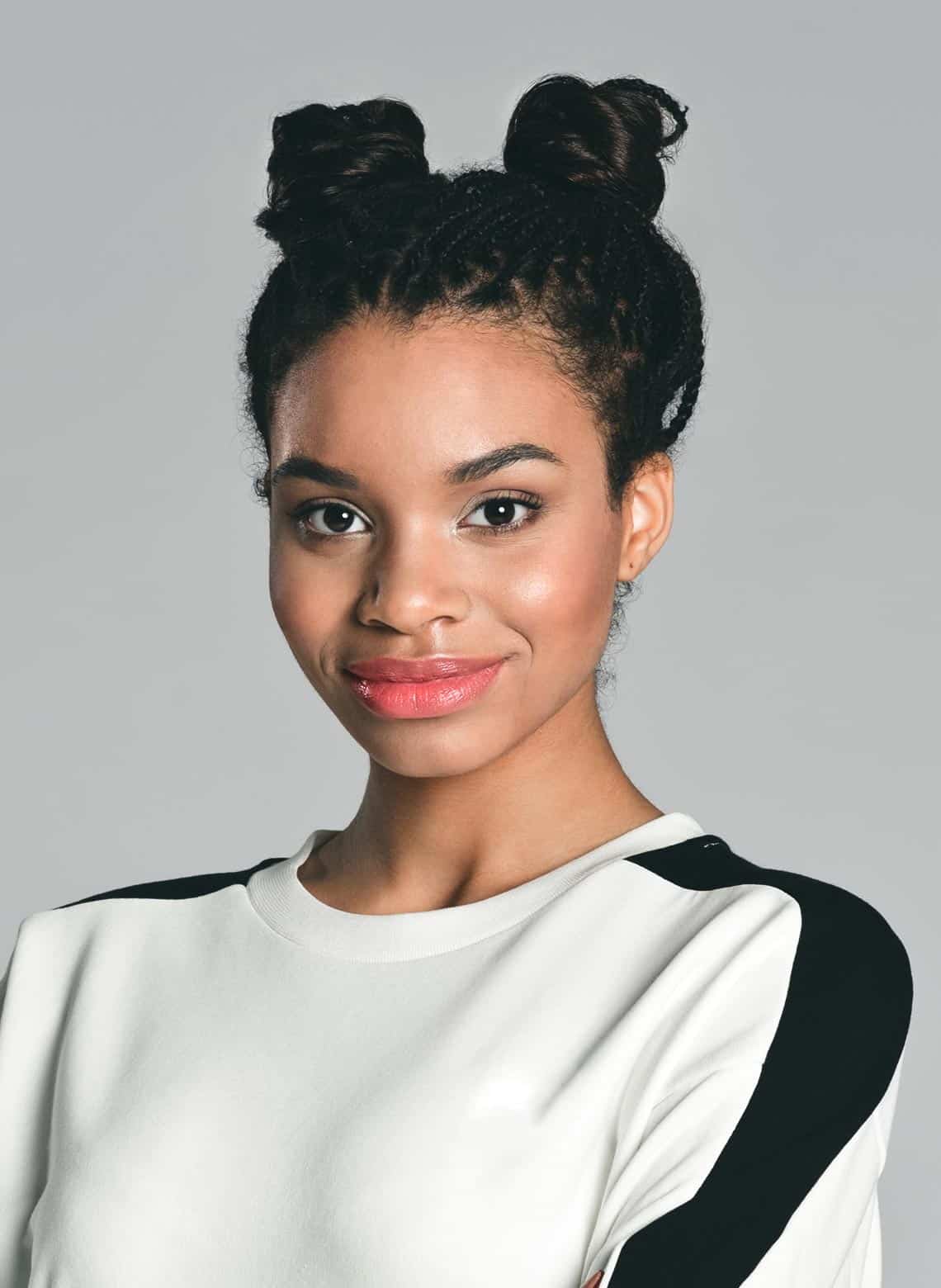
Double buns are a popular style that both kids and adults are wearing. Depending on your length, you can wear double buns half up, half down or throw all of your hair into both buns.
Knotless braids are a great option if you want a protective style that puts less tension on your hair and scalp. They don’t last as long as box braids, but it’s worth it in exchange for a relatively painless installation and a safer style.
Should I get knotless braids done at the salon?
You should get knotless braids done at the salon so you can get them safely and correctly installed. Getting them professionally installed instead of DIYing them at home also saves you lots of time. When you’re doing it yourself, you need to teach yourself the technique and do lots of braiding on hair.
Below are some of the main things that professional braiders can do for you at the salon that’s not easy to do yourself:
- Tailor the extensions. A professional knows how to ensure the extensions they’re working with are perfect for your crown and will look their best.
- Use proper tension. Braiders know how much pressure to use throughout the braiding process, so your braids don’t tug on your scalp. Braiding with the wrong amount of tension can unintentionally stress your roots and cause breakage.
- Order the right amount of extensions. DIY doesn’t mean free. You’ll have to order the extensions yourself. There’s a chance you could order too few and then need to wait for another shipment, or order too many and waste money.
There’s no substitute for professional advice. Having someone help you make up your mind can be a lifesaver. A professional braider can also offer great natural hair care tips that are tailored to your hair.
Factors like braid length, thickness, and style all affect how much your salon visit will wind up costing overall. Finding a braider who knows exactly how to help can save you time and money in the long run.
When you’re ready, look through our directory to find a braider who specializes in knotless braids near you.
